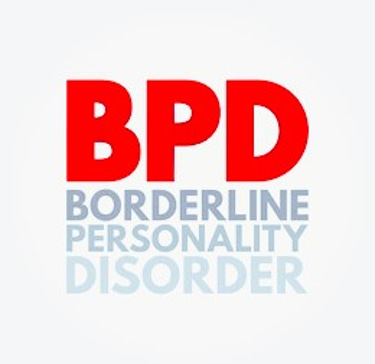The Statistics on BPD
G. Pacana
8/6/20252 min read


Prevalence of BPD in the General Population:
Approximately 2% of the general population is diagnosed with BPD, though some estimates place it as high as 6% due to underreporting and misdiagnosis.
BPD is more commonly diagnosed in women (75%) than men, though this may partly reflect gender biases in diagnosis.
Prevalence in Clinical Populations:
BPD is present in about 10% of psychiatric outpatients and 20% of psychiatric inpatients, underscoring its significant impact within mental health care settings
Approximately 80% of individuals with BPD will attempt suicide at least once in their lifetime.
10% of those with BPD are estimated to die by suicide, a rate that is 50 times higher than the general population.
Studies show that individuals with BPD have a mortality rate approximately 10 years lower than the general population, often due to suicide, substance abuse, or health complications from impulsive behaviors.
BPD and Comorbid Conditions:
80% to 90% of people with BPD will experience major depressive disorder (MDD) at some point in their lives.
Around 88% of those with BPD also meet the criteria for an anxiety disorder, including generalized anxiety disorder (GAD), social anxiety disorder, or post-traumatic stress disorder (PTSD).
Approximately 53% of individuals with BPD will have an eating disorder, with bulimia nervosa and binge eating disorder being the most common.
Studies indicate that 20% to 30% of those with BPD also meet criteria for another personality disorder, such as narcissistic personality disorder or antisocial personality disorder.
Around 50% to 65% of individuals with BPD also have a substance use disorder.
Those with BPD and SUD are at a significantly higher risk for self-harm and suicide, as well as other health complications and legal issues.
People with BPD often use substances as a form of self-medication to manage emotional pain, with 40% reported as having issues with alcohol and 30% with drug abuse.
Healthcare Utilization and BPD:
Individuals with BPD account for about 20% of all psychiatric hospital admissions due to the high level of mental health crises often associated with the disorder.
BPD is linked to frequent emergency room visits for self-harm incidents, medication needs, or acute mental health crises.
Approximately 40% to 50% of individuals diagnosed with BPD are involved in outpatient treatment at any given time, often seeking care from multiple mental health professionals.
BPD Recovery and Treatment:
Studies show that with structured treatment, 50% of those with BPD experience symptom remission within 2 years, and 85% achieve remission within 10 years.
Long-term studies reveal that 88% of those with BPD remain in remission without a return of the full symptom set after 10 years.
Dialectical Behavior Therapy (DBT) and other evidence-based treatments have a high success rate; however, 40% of individuals with BPD may drop out of therapy due to the intense demands of treatment.
While BPD statistics can seem daunting, they also reveal the potential for recovery and improvement with the right treatment and support.
"One important thing to keep in mind about BPD is that it comes with a lot of extra baggage. That is, many people with BPD have other problems and may meet criteria for other diagnoses. For instance, many people with BPD suffer from depression, anxiety disorders, eating disorders, and/or drug and alcohol problems. People with BPD are also at risk for suicide attempts, self-harm, and other self-destructive behaviors.”
― Alexander L. Chapman
Source Material: NAMI.org, NIH.gov
Copyright 2025 Psycnet, All Rights Reserved
